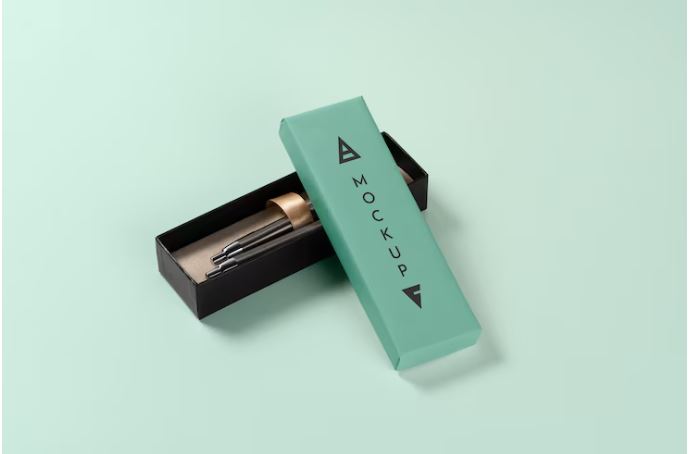Introduction
Eyes are one of the most vulnerable parts of the human body, and protecting them is crucial, especially in environments where hazards are present. Safety eyewear is designed to shield your eyes from various dangers, ensuring that you can work efficiently and safely. This comprehensive guide will cover everything you need to know about safety eyewear, from the types available to how to maintain them properly.
What Is Safety Eyewear?
Safety eyewear includes all forms of protective glasses, goggles, and face shields designed to prevent eye injuries. They are used in a variety of settings, from industrial workplaces to healthcare facilities, providing essential protection against debris, chemicals, and other harmful substances.
Benefits of Using Safety Eyewear
Preventing Eye Injuries: Safety eyewear is designed to protect against a range of hazards, including flying debris, chemical splashes, and harmful radiation. By wearing appropriate protective gear, you significantly reduce the risk of eye injuries.
Enhancing Work Efficiency: Clear vision is crucial for performing tasks efficiently. Safety eyewear ensures that your vision remains unobstructed and sharp, even in hazardous environments.
Compliance with Safety Standards: Many industries have strict safety regulations that require the use of protective eyewear. Using certified safety eyewear ensures compliance with these standards, avoiding potential fines and ensuring a safer workplace.
Types of Safety Eyewear
Safety Glasses: These are the most common form of safety eyewear, offering protection against impact and, in some cases, dust and chemical splashes. They are available in both prescription and non-prescription forms.
Safety Goggles: Goggles provide a higher level of protection compared to glasses, as they seal around the eyes, offering better protection against dust, fumes, and splashes.
Face Shields: Face shields cover the entire face, providing protection against severe hazards such as chemical splashes and flying debris. They are often used in conjunction with safety glasses or goggles for additional protection.
Prescription Safety Eyewear: For those who need vision correction, prescription safety eyewear combines protective features with your prescription lenses, ensuring both clear vision and eye protection.
Key Features to Look For in Safety Eyewear
Impact Resistance: Look for eyewear that meets the ANSI Z87.1 standard for impact resistance. This ensures that the eyewear can withstand high-velocity impacts.
UV Protection: If you work outdoors or in environments with UV exposure, choose safety eyewear with UV protection to shield your eyes from harmful ultraviolet rays.
Anti-Fog and Scratch-Resistant Coatings: These coatings enhance the durability and functionality of your eyewear, ensuring clear vision and reducing the need for frequent replacements.
Comfort and Fit: Ensure that the eyewear fits well and is comfortable to wear for extended periods. Adjustable features and cushioned nose pads can enhance comfort.
How to Choose the Right Safety Eyewear
Assessing Your Needs: Consider the specific hazards in your work environment. Are you exposed to flying debris, chemical splashes, or intense light? Choose eyewear that provides adequate protection against these hazards.
Understanding Different Work Environments: Different workplaces have different requirements. For example, healthcare professionals need eyewear that can withstand frequent cleaning, while construction workers need durable, impact-resistant lenses.
Ensuring Proper Fit: Proper fit is crucial for effective protection. Ensure that the eyewear fits snugly without being too tight and that it stays in place during your activities.
Top Brands of Safety Eyewear
Brand A: Known for its high-quality and durable lenses, Brand A offers a range of safety eyewear suitable for various needs and environments.
Brand B: Combining style and functionality, Brand B provides eyewear that not only performs well but also looks great.
Brand C: With a focus on advanced technology, Brand C offers innovative solutions like hydrophobic treatments and dual lens systems.
Maintaining and Caring for Safety Eyewear
Cleaning Tips: Use a microfiber cloth and a lens cleaner specifically designed for safety eyewear. Avoid using abrasive materials that can scratch the lenses.
Proper Storage: Store your eyewear in a protective case when not in use to prevent damage and dust accumulation.
Regular Inspections: Regularly check your eyewear for signs of wear and tear. Replace them if the lenses are scratched or if the frames are damaged.
Common Misconceptions About Safety Eyewear
Myth 1: Regular Glasses Can Be Used as Safety Eyewear: Regular glasses do not provide the same level of protection as safety eyewear. Safety glasses are specifically designed to withstand impacts and other hazards.
Myth 2: Safety Eyewear Is Uncomfortable: Modern safety eyewear is designed with comfort in mind. Many models feature adjustable and cushioned elements to enhance comfort during extended wear.
Myth 3: All Safety Eyewear Is the Same: Safety eyewear varies in terms of protection levels, features, and design. It’s important to choose the right type for your specific needs.
Impact on Different Professions
Construction Workers: Safety eyewear protects against flying debris, dust, and other hazards commonly encountered on construction sites.
Healthcare Professionals: In healthcare settings, safety eyewear provides protection against bodily fluids and other contaminants, ensuring both patient and worker safety.
Laboratory Technicians: Lab environments can vary in temperature, and technicians often work with chemicals. Safety eyewear provides essential protection against splashes and fumes.
Industrial Workers: In industrial settings, safety eyewear protects against a range of hazards, including flying particles, chemicals, and intense light.
User Testimonials
User Experience 1: “Safety eyewear has saved my eyes numerous times on the construction site. The clear vision and comfort make it easy to wear all day.”
User Experience 2: “As a healthcare worker, safety eyewear is a must. It gives me peace of mind knowing that I’m protected from potential splashes and contaminants.”
User Experience 3: “Working in a lab, I rely on my safety goggles to keep my eyes safe from chemical splashes. They’re comfortable and fit well, even during long hours.”
Comparing Safety Eyewear with Regular Eyewear
Performance Differences: Safety eyewear is specifically designed to protect against impacts, chemicals, and other hazards, whereas regular eyewear does not offer the same level of protection.
Cost Analysis: While safety eyewear may have a higher upfront cost, the benefits of enhanced safety and durability often justify the investment. Regular eyewear might save money initially, but it does not provide the necessary protection in hazardous environments.
Long-Term Benefits: The durability and longevity of safety eyewear make it a cost-effective choice in the long run. Investing in high-quality safety eyewear can save money on replacements and increase workplace safety.
FAQs About Safety Eyewear
How Often Should Safety Eyewear Be Replaced?
Safety eyewear should be replaced if the lenses are scratched, the frames are damaged, or if they no longer fit properly. Regular inspections can help determine when replacements are needed.
Can Safety Eyewear Be Worn Over Prescription Glasses?
Yes, there are safety goggles designed to be worn over prescription glasses, providing both vision correction and eye protection.
What Are the Best Materials for Safety Eyewear?
Polycarbonate is a popular material for safety eyewear due to its durability and impact resistance. Trivex is another excellent option, offering similar benefits with added comfort.
How Do I Know If My Safety Eyewear Meets Standards?
Look for markings that indicate compliance with ANSI Z87.1 or other relevant safety standards. This ensures that the eyewear meets the necessary safety requirements.
Are There Stylish Options for Safety Eyewear?
Yes, many brands offer stylish safety eyewear that combines protection with modern design. You can find options that suit your personal style while providing the necessary protection.
Conclusion
Safety eyewear is an essential component of personal protective equipment, providing crucial protection against a variety of hazards. Whether you work in construction, healthcare, laboratories, or industrial settings, investing in high-quality safety eyewear is vital for maintaining clear vision and ensuring safety. By choosing the right type of safety eyewear and maintaining it properly, you can protect your eyes and enhance your work efficiency. Don’t compromise on eye safety—choose the best safety eyewear for your needs and see the world clearly and safely.
FAQs
1. How Often Should Safety Eyewear Be Replaced?
Safety eyewear should be replaced if the lenses are scratched, the frames are damaged, or if they no longer fit properly. Regular inspections can help determine when replacements are needed.
2. Can Safety Eyewear Be Worn Over Prescription Glasses?
Yes, there are safety goggles designed to be worn over prescription glasses, providing both vision correction and eye protection.
3. What Are the Best Materials for Safety Eyewear?
Polycarbonate is a popular material for safety eyewear due to its durability and impact resistance. Trivex is another excellent option, offering similar benefits with added comfort.
4. How Do I Know If My Safety Eyewear Meets Standards?
Look for markings that indicate compliance with ANSI Z87.1 or other relevant safety standards. This ensures that the eyewear meets the necessary safety requirements.
5. Are There Stylish Options for Safety Eyewear?
Yes, many brands offer stylish safety eyewear that combines protection with modern design. You can find options that suit your personal style while providing the necessary protection.




